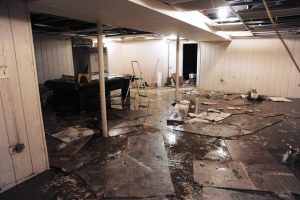How to Inspect a Commercial Property for Mold or Water Damage Before Winter
 Numerous situations can lead to extensive mold or water damage in a commercial property, especially in North Carolina where floods, hurricanes, and snowstorms are commonplace. These problems can worsen during winter as most commercial buildings communities like Iredell County aren’t well prepared for cold conditions like their Northern counterparts. Thus, they’re more prone to burst/leaky pipes and sewage backup that can cause water to easily collect in the floors or walls, leading to water damage.
Numerous situations can lead to extensive mold or water damage in a commercial property, especially in North Carolina where floods, hurricanes, and snowstorms are commonplace. These problems can worsen during winter as most commercial buildings communities like Iredell County aren’t well prepared for cold conditions like their Northern counterparts. Thus, they’re more prone to burst/leaky pipes and sewage backup that can cause water to easily collect in the floors or walls, leading to water damage.
Winter is coming again. If you want to save yourself the inconvenience and financial strain, you need to learn how to inspect a commercial property for mold or water damage. This way, you can proactively take care of any hidden problems by hiring a home restoration service.
Let’s get started!
What You’ll Need
If you’re planning to take the DIY route to home inspection, the following is a list of essential items you’ll for the job. However, we recommend hiring home restoration professionals for this job, considering they do this day in and day out, and have the proper tools and equipment to detect problems you might overlook.
1. Protective Gear
Any inspection job requires essential protective gear, such as boots, gloves, safety goggles, and headwear. Damp conditions contain different biohazards. So, you should cover up your skin as much as possible. Plus, extra clothing can protect you from potential injury from a slip and fall incident.
2. Light
Most water damage occurs in structural areas with poor lighting, especially when you’re inspecting unoccupied commercial properties that haven’t undergone maintenance in a while. In this case, you should always carry a flashlight or lamp that can provide sufficient lighting when and where you need it. Proper lighting can also prevent injuries during the inspection as it increases the site’s visibility.
3. Camera
Most property owners have insurance, which covers some or all expenses for water damage repairs or mold remediation. However, during the inspection, you need to document the damage through photos and videos. This way, you will have enough evidence to receive fair compensation. You don’t need a fancy DSLR for this. You can use your smartphone and email the documents to your insurance agent.
4. Moisture Meter
If you’re inspecting your property for mold buildup or leaks, a moisture meter can come in handy. This device is among the most essential piece of equipment most home restoration experts use to trace the origin point of a leak in drywalls, bricks, plaster, or wood, etc.
Where to Check for Mold or Water Damage
Most restoration experts typically start from the top and work their way down a commercial property. Here’s where you can look for signs:
- Basement
- Kitchen
- Bathroom
- Furnace and Duct Work
- Ceiling
- Crawlspaces
- Plumbing
Inspecting a Commercial Property for Water or Mold Damage
Poor building winterization can lead to extensive damage that can take thousands of dollars to repair. Here’s how to inspect a commercial property for mold or water damage:
1. Review Your Property’s Renovations or Claims History
The easiest way to learn about your property is to check for previous renovations or claim records for water damage repairs. You can also contact the estate agent or previous owners to inquire about any claims for sewage backups or mold remediation.
2. Look For Rust
Rust is a sign of long-term exposure to moisture or damp conditions over an extended period. While inspecting your property, pay close attention to all-metal structures, especially those close to the plumbing, kitchen, and bathrooms. They can lead you to the water source responsible for the damage.
3. Pay Attention to Strange odors and Tiny Spots
While inspecting your property, look for strange black, white, green, or powdery spots with a musty, earthy smell. If there’s a nearby source of moisture, then it’s mold. To confirm, put a drop of bleach on the spot to see if it lightens in color. If it does, then you need to call a home restoration service right away before it grows and ruins your walls, ceilings, and/or floors.
4. Inspect the Walls
Your walls and ceilings are meant to stay dry. However, if you see yellow-brown stains, discoloration, or cracks, it’s a sign of exposure to moisture from the closest water source, such as the roof during rainfall or pipelines behind walls in the bathroom.
Acclaimed Home Restoration Services – 911 Restoration of Iredell County
There’s nothing wrong with taking the DIY route to inspect your property for mold or water damage. However, some jobs are better left to the professionals. They have the expertise and experience to inspect and repair any damages thoroughly. At 911 Restoration of Iredell County, we encourage homeowners to inspect and maintain their properties actively. However, most extensive repair jobs require professional intervention to return your property to its original state. Our team has worked on hundreds of inspections and restoration projects in North Carolina, so we can quickly identify the damage source and fix it.
Feel free to call us for more information regarding our home restoration services.




